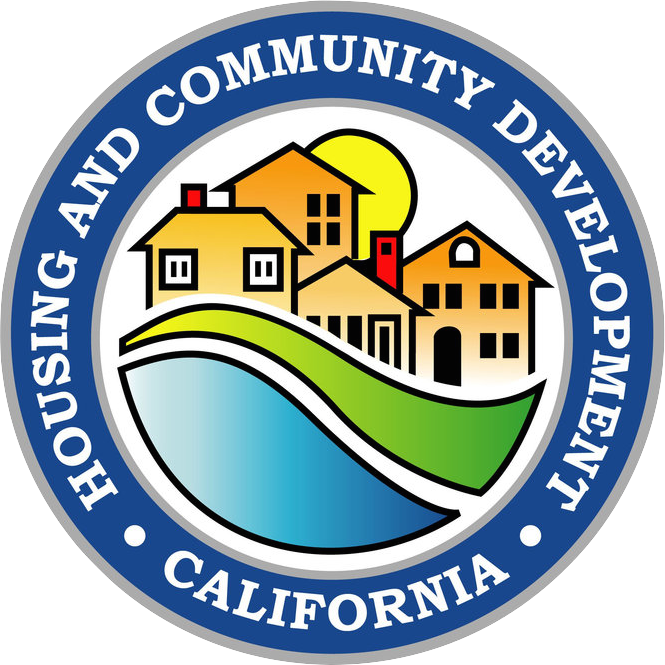CALGreen
CALGreen is California’s first green building code and first in the nation state-mandated green building code. It is formally known as the California Green Building Standards Code, and can be found in California Code of Regulations, title 24, part 11.
The purpose of CALGreen is to improve public health, safety, and general welfare through enhanced design and construction of buildings using concepts which reduce negative impacts and promote those principles which have a positive environmental impact and encourage sustainable construction practices. CALGreen was adopted to address the five divisions of building construction:
- Planning and design
- Energy efficiency
- Water efficiency and conservation
- Material conservation and resource efficiency
- Environmental quality
Application
CALGreen applies to the planning, design, operation, construction, use, and occupancy of every newly-constructed building or structure on a statewide basis unless otherwise indicated. Additions and alterations to existing buildings which increase the building’s conditioned area, interior volume, or size are also covered by the scope of CALGreen.
CALGreen also specifies requirements for applications regulated by the California Building Standards Commission (BSC), California Energy Commission (CEC), Division of the State Architect (DSA), Department of Public Health (CDPH), Office of Statewide Health Planning and Development (OSHPD), and the Department of Water Resources (DWR). Consistent with other parts of Title 24, the Matrix Adoption Tables at the front of each chapter are to assist the code user to determine which sections or chapters are applicable to buildings under the authority of a specific State agency; however, they are for information only and are not considered regulatory.
Scope
CALGreen provisions under the jurisdiction of the California Department of Housing and Community Development (HCD) are for newly constructed residential structures, as well as additions and alterations to existing buildings which increase the building’s “conditioned area, interior volume or size. Therefore, for the purposes of HCD, CALGreen applies to the following types of residential structures:
- Hotels, motels, lodging houses
- Apartment houses, condominiums
- One and two-family dwellings, townhouses, factory-built housing
- Dormitories, shelters for homeless persons, congregate residences, employee housing
- Other types of dwellings containing sleeping accommodations with or without common toilets or cooking facilities
Department of Housing and Community Development
CALGreen Bicycle Parking Public Comment Period — October 25, 2023, through November 8, 2023
HCD is requesting public input on bicycle parking proposed amendments in the 2024 Triennial Code Adoption Cycle for the 2025 California Green Building Standards (CALGreen) Code, title 24, part 11 impacting residential occupancies. The 2025 CALGreen Code, if approved by the California Building Standards Commission (CBSC), will be effective January 1, 2026.
- Bicycle Parking — Draft Express Terms (DOC)
- Bicycle Parking — Draft Initial Statement of Reasons (PDF)
To submit your comments regarding HCD’s rulemaking, please email the State Housing Law Program at Title24@hcd.ca.gov by the November 8, 2023 deadline. The CBSC will also be requesting input on bicycle parking proposed amendments that impact nonresidential occupancies. To review CBSC’s bicycle parking proposal, and other pre-cycle activities, please visit CBSC Pre-Cycle Activities.
CALGreen Electric Vehicle (EV) Charging Focus Group — September 11, 2023
- Focus Group Agenda (PDF)
- EV Charging Changes Made During 2022 Intervening Cycle — Draft Express Terms (PDF)
California Building Standards Commission
2022 CALGreen
- 2022 CALGreen Code
- Guide to the 2022 California Green Building Standards Code: Residential
- To obtain the documents referenced within the Guide, please email HCDBuildingStandards@hcd.ca.gov.
- 2022 Residential Mandatory Measures (PDF) — Effective January 1, 2023
- 2022 Tier 1 Residential Measures (PDF) — Effective January 1, 2023
- 2022 Tier 2 Residential Measures (PDF) — Effective January 1, 2023
- 2022 Residential Occupancies Application Checklist (PDF) — Section A4.602, effective January 1, 2023
- 2022 Residential Occupancies Application Checklist — Attachment (PDF) — Effective January 1, 2023
2019 CALGreen
- 2019 CALGreen Code
- Guide to the 2019 California Green Building Standards Code: Residential
- To obtain the documents referenced within the Guide, please email HCDBuildingStandards@hcd.ca.gov.
- 2019 Residential Occupancies Application Checklist (PDF) — Appendix A4, Section A4.602
2016 CALGreen
- 2016 CALGreen Code
- Guide to the 2016 California Green Building Standards Code: Residential
- To obtain the documents referenced within the Guide, please email HCDBuildingStandards@hcd.ca.gov.
- 2016 Residential Occupancies Application Checklist (PDF) — Appendix A4, Section A4.602
- Residential Mandatory Measures (RMM) 2 (PDF) — 2016 CALGreen Installation Certificate
- 2016 Tier 1 Residential Measures (PDF) — Effective January 1, 2017
- 2016 Tier 2 Residential Measures (PDF) — Effective January 1, 2017
2013 CALGreen
- 2013 CALGreen Code
- To obtain a copy of the Guide to the 2013 California Green Building Standards Code: Residential, visit the International Code Council (ICC) website.
- To obtain the documents referenced within the Guide, please email HCDBuildingStandards@hcd.ca.gov.
- 2013 Residential Mandatory Measures (PDF) — Effective January 1, 2014
- 2013 Intervening Code Changes (PDF) — Effective January 1, 2015
2010 CALGreen
- 2010 CALGreen Code
- To obtain a copy of the Guide to the 2010 California Green Building Standards Code: Residential, visit the International Code Council (ICC) website.
- To obtain the documents referenced within the Guide, please email HCDBuildingStandards@hcd.ca.gov.
- Low-Rise Residential Mandatory Measures (PDF) — Effective July 1, 2012
- 2010 Residential Occupancies Application Checklist (DOC) — Effective July 1, 2012
- 2010 Residential Occupancies Application Checklist (DOC) — Effective January 1, 2010
HCD developed forms and worksheets to support users in meeting CALGreen documentation requirements. The forms and worksheets are offered only as aids, which may be used to show compliance with CALGreen, and are not State mandated. Contact the State Housing Law Program at (800) 952-8356 to obtain copies of any of the forms or worksheets. You may modify the forms to fit the needs of an individual or local enforcing agency. Before using the compliance forms, you should always check with the local enforcing agency to verify whether any jurisdiction-specific forms are required.

